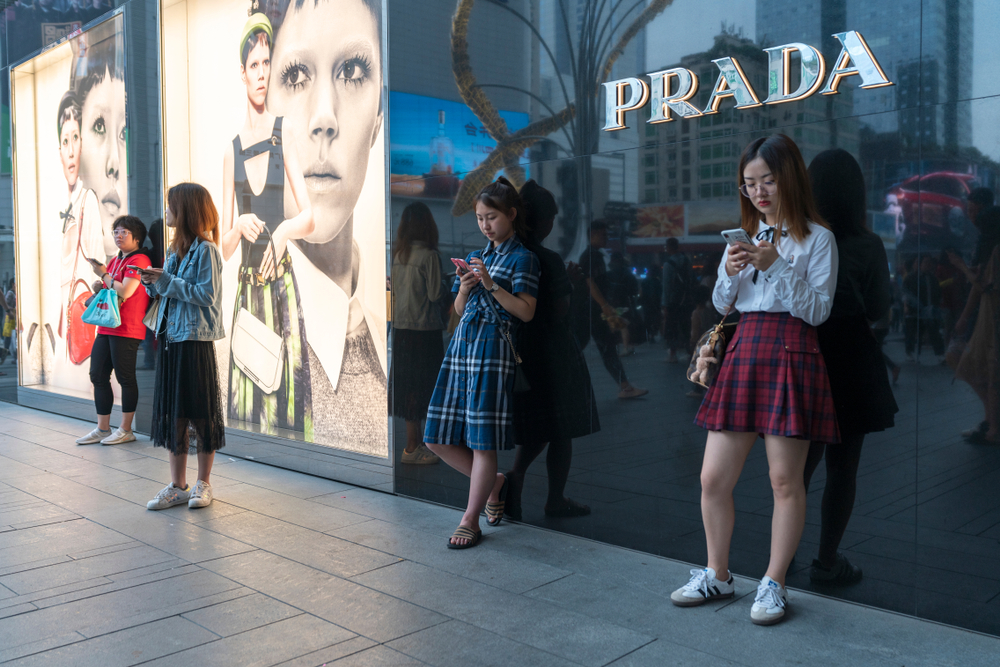In 2024, most luxury and fashion Brands are experiencing major losses in China. Given the fundamental importance of this market to the industry, these losses are likely to significantly affect the economic stability of a substantial number of Brands, large and small. To best understand the future prospects, we will focus on analyzing the economic, social, and structural factors that are reshaping the Chinese luxury landscape.
Il rallentamento della crescita economica in Cina
After decades of double-digit expansion, with the arrival of COVID19, the luxury and fashion market in China experienced a major slowdown alerting many Brands operating in these sectors and for which China was a major source of sales.
The main cause of this trend has been identified as the more general slowdown in China’s GDP growth, which in turn has been caused by factors such as a weakening real estate market, shrinking industrial investment, and reduced global demand for Chinese products. These macroeconomic factors have had a major impact on the purchasing power of many households, including those in the upper-middle class, who make up a large portion of buyers of fashion and luxury goods.
Nuove tendenze nel comportamento dei consumatori
Chinese consumers are becoming increasingly sophisticated and selective in their choices. The luxury and fashion market in China appears to be moving toward a “maturity” stage, where customers are beginning to seek out more niche luxury and fashion products that are not accessible to the masses.
The phase of ostentatious consumerism seems to have ended, and the desire to flaunt wealth through luxury brands is on the decline. New generations, in particular, are seeking more authentic and sustainable experiences, with an increasing focus on the social and environmental responsibility of brands. As a result, brands that fail to meet these needs are losing market share. All these elements also explain the fact that Brands that have an image and product related to “quiet luxury” are turning out to be less affected by this decline, thanks to their niche product, luxurious but in an understated way.
The change in consumer behavior also manifests itself in the spread of the phenomenon of “Guochao,” or national pride in Chinese products. The area’s many up-and-coming designers are beginning to attract the interest of consumers, who value the fact that they can buy a luxury product created by local designers that reflects local culture and trends. Brands such as Shang Xia and Li-Ning are benefiting from this phenomenon, thanks to their ability to blend contemporary design and Chinese tradition.
Impatto delle politiche governative
Another factor that has significantly contributed to the decline of the fashion and luxury market in China is the intense Government Policies implemented by the government with the aim of fighting corruption. These actions have discouraged the trend of gifting luxury goods in the corporate and political arena, a practice that was previously widespread in China. In parallel, the government has also begun to apply great pressure on multinational corporations to ensure compliance with labor and environmental rights regulations. As a result, the operating costs of many companies have soared, causing investors and entrepreneurs to reduce their profit and purchasing power.
All of these government actions and economic-political changes, have had a direct impact on people’s confidence and market stability. Insecurity toward the future has led to a reduction in discretionary spending, especially on nonessential goods such as luxury and fashion products. The population began to prefer saving to consumption, with a view to protecting themselves in a future time of severe economic contraction.
La competizione digitale
The last factor we analyze concerns the strong competition resulting from the digital shopping ecosystem.
Online shopping in China is among the most advanced in the world, both in technological and experiential terms.
Platforms such as WeChat, Douyin and Tmall Luxury Pavilion dominate the market and severely challenge the fashion and luxury industries, requiring continuous innovation and massive investments in Marketing. Brands in these sectors often struggle to keep up with ever-changing e-commerce strategies and artificial intelligence, leaving the way clear for the most agile and innovative local brands. In addition, the digital shopping ecosystem generates the complexity of having to strike the right balance between simplicity in the customer journey and luxury in the shopping experience, which is very difficult for Brands with an established global image to manage.
It is clear that the shrinking luxury and fashion market in China is not only influenced by government policies or a general economic slowdown, but more importantly by a profound change in consumer preferences and behavior. Adapting quickly to these new dynamics is essential for luxury and fashion Brands that will want to maintain a leadership position and profitable business in China’s territory.
The article China’s luxury and fashion market in 2024: A challenging current environment and high hopes for the future comes from TheNewyorker.

